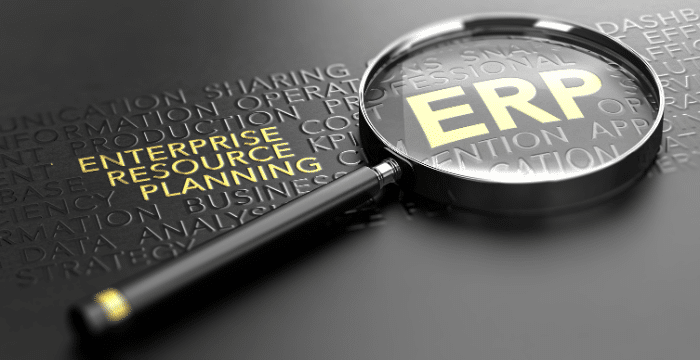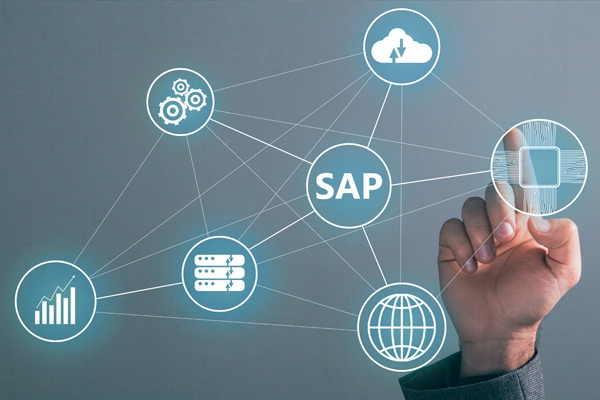Empower Your Growth: Harnessing the Potential of Microsoft ERP System

Table of Contents
Microsoft ERP System In today’s rapidly evolving business landscape, organizations rely on robust Enterprise Resource Planning (ERP) systems to streamline operations, optimize processes, and drive growth. Among the leading solutions available, the Microsoft ERP System stands out for its comprehensive suite of tools designed to enhance efficiency, scalability, and strategic decision-making capabilities. This detailed exploration delves into the transformative potential of the Microsoft ERP System, highlighting its key features, benefits, and strategic advantages for businesses aiming to empower their growth and stay ahead in competitive markets.

Understanding the Dynamics of Microsoft ERP System
The Microsoft ERP System encompasses a range of integrated applications and modules tailored to meet diverse business needs across industries. From financial management and supply chain operations to human resources and customer relationship management (CRM), this ERP solution integrates essential functions into a unified platform, leveraging Microsoft’s technological prowess and innovation.
Key Components and Features of Microsoft ERP System
- Financial Management: Central to the Microsoft System is its robust financial management capabilities. It includes modules for general ledger, accounts payable, accounts receivable, and fixed assets, enabling organizations to maintain accurate financial records, streamline budgeting processes, and ensure compliance with regulatory requirements.
- Supply Chain Management: Efficient supply chain operations are facilitated through Microsoft ERP modules for inventory management, procurement, and logistics. Real-time visibility into inventory levels, demand forecasting, and supplier relationship management enhances operational efficiency and responsiveness to market demands.
- Human Capital Management: The ERP solution supports comprehensive human resources functions, including payroll processing, benefits administration, talent management, and workforce planning. Microsoft ERP System empowers HR teams to streamline personnel processes, optimize workforce allocation, and foster employee engagement.
- Business Intelligence and Analytics: A cornerstone of ERP System is its advanced business intelligence tools. These tools provide actionable insights through customizable dashboards, data visualization, and predictive analytics, empowering decision-makers to derive meaningful insights from vast datasets and drive informed strategic initiatives.
- Integration and Scalability: Built on Microsoft’s Azure cloud platform, the Microsoft ERP offers seamless integration with other Microsoft applications such as Office 365, Dynamics 365 CRM, and Power BI. This integration ensures data consistency, enhances collaboration across departments, and supports scalability as businesses expand operations.
Advantages of Adopting Microsoft ERP System for Business Growth
1. Enhanced Operational Efficiency
By consolidating core business processes within a unified platform, Microsoft ERP System eliminates silos and reduces manual effort. Automation of routine tasks, streamlined workflows, and real-time data access enable organizations to operate more efficiently and allocate resources effectively.
2. Strategic Decision-Making Support
Access to timely and accurate information through Microsoft System’s business intelligence capabilities empowers executives and managers to make data-driven decisions. From identifying market trends to evaluating performance metrics, the ERP solution enhances strategic agility and responsiveness to changing business conditions.
3. Scalability and Adaptability
As businesses evolve, Microsoft ERP provides the flexibility and scalability needed to support growth initiatives. Whether expanding into new markets, adding product lines, or integrating acquisitions, organizations can customize the ERP system to meet evolving business requirements and regulatory standards.
Implementing Microsoft ERP System: Best Practices
1. Comprehensive Needs Assessment
Prior to implementation, conduct a thorough assessment of organizational requirements, pain points, and strategic objectives. Align Microsoft ERP System functionalities with specific business goals to ensure maximum utilization and alignment with long-term growth strategies.
2. Change Management and Training
Effective change management is essential for successful ERP adoption. Invest in comprehensive training programs to familiarize users with Microsoft ERP System’s features and functionality. Engage stakeholders early in the process, address concerns proactively, and foster a culture of continuous learning and adaptation.
3. Data Migration and Integration
Ensure seamless data migration from legacy systems to Microsoft ERP System and establish robust data governance policies. Integration with existing IT infrastructure and third-party applications should be carefully planned to maintain data integrity, minimize disruption, and maximize operational efficiency.
Case Studies Demonstrating Success with Microsoft ERP System
Case Study 1: Manufacturing Excellence
A global manufacturing company implemented Microsoft ERP System to streamline production scheduling, optimize inventory management, and improve supply chain visibility. The ERP solution enabled real-time collaboration between production teams and suppliers, resulting in reduced lead times and enhanced operational efficiency.
Case Study 2: Retail Innovation
A leading retail chain leveraged Microsoft ERP System to enhance customer insights, personalize marketing campaigns, and optimize store operations. By integrating CRM data with inventory management and sales analytics, the retailer improved inventory turnover, customer satisfaction, and overall profitability.
Challenges and Considerations in Adopting Microsoft ERP System
While Microsoft ERP System offers significant benefits, challenges such as initial investment costs, customization complexity, and user adoption should be addressed. Organizations must allocate resources effectively, engage stakeholders proactively, and leverage vendor support to navigate implementation challenges and achieve long-term success.
Microsoft ERP System
In conclusion, the Microsoft ERP System emerges as a powerful tool for empowering business growth, enhancing operational efficiency, and enabling strategic decision-making in today’s competitive landscape. By integrating financial management, supply chain operations, human resources, and business intelligence into a unified platform, organizations can streamline processes, gain actionable insights, and drive sustainable growth. Case studies underscore how diverse industries have successfully leveraged Microsoft ERP System to achieve operational excellence, improve customer satisfaction, and capitalize on market opportunities. As businesses embrace digital transformation, investing in an ERP solution like Microsoft ERP System is essential for staying agile, competitive, and poised for future success in an increasingly interconnected global economy.





